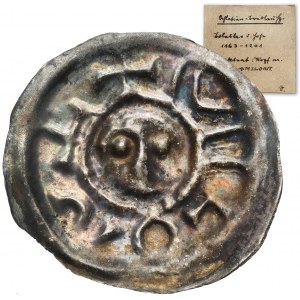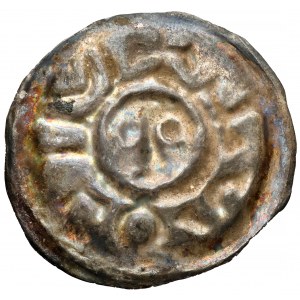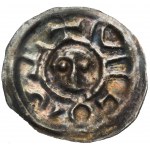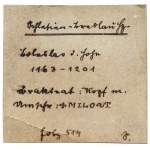A very rare and distinctive type of Polish brakteat.
The coin depicts a head in front, in a pearl border, with the inscription MILOST in the rim.
MILOST is probably an early medieval inscription of the word LOVE. As Gumowski writes, as late as the end of the 15th century, the endings for ŒĆ were written by ST. (...) From the numismatic point of view, we can put our coin in a series of others with inscriptions of virtues - CARITAS, IVSTITIA, FIDES, VIRTVS.... Regarding the MILOST inscription, Boris Paszkiewicz noted that it may also have a Czech etymology.
Gumowski attributed the minting of this coin to Mieszko I Plątonogi (1163-1211), and it was also attributed to Henry I the Bearded (1201-1238). Both were sons of Ladislaus II the Exile, grandsons of Boleslaus the Wry-mouthed. After the division of Poland by the will of Boleslaw the Wry-mouthed, they became the founders of the Upper Silesian Piast dynasty. Gumowski linked the minting of this coin to the circumstance of the establishment of peace between Mieszko and his brother Boleslaw the Tall after 1190. Witold Garbaczewski in World of Brakteates writes Currently, the Rataj brakteates (including the piece in question) are considered to be Lower Silesian coins, dated to the 1320s, 1330s.
Included is a slip from an old collection.
Coin without defects, in a beautiful old patina.
Silver, diameter 17 mm, weight 0.18 g.






















